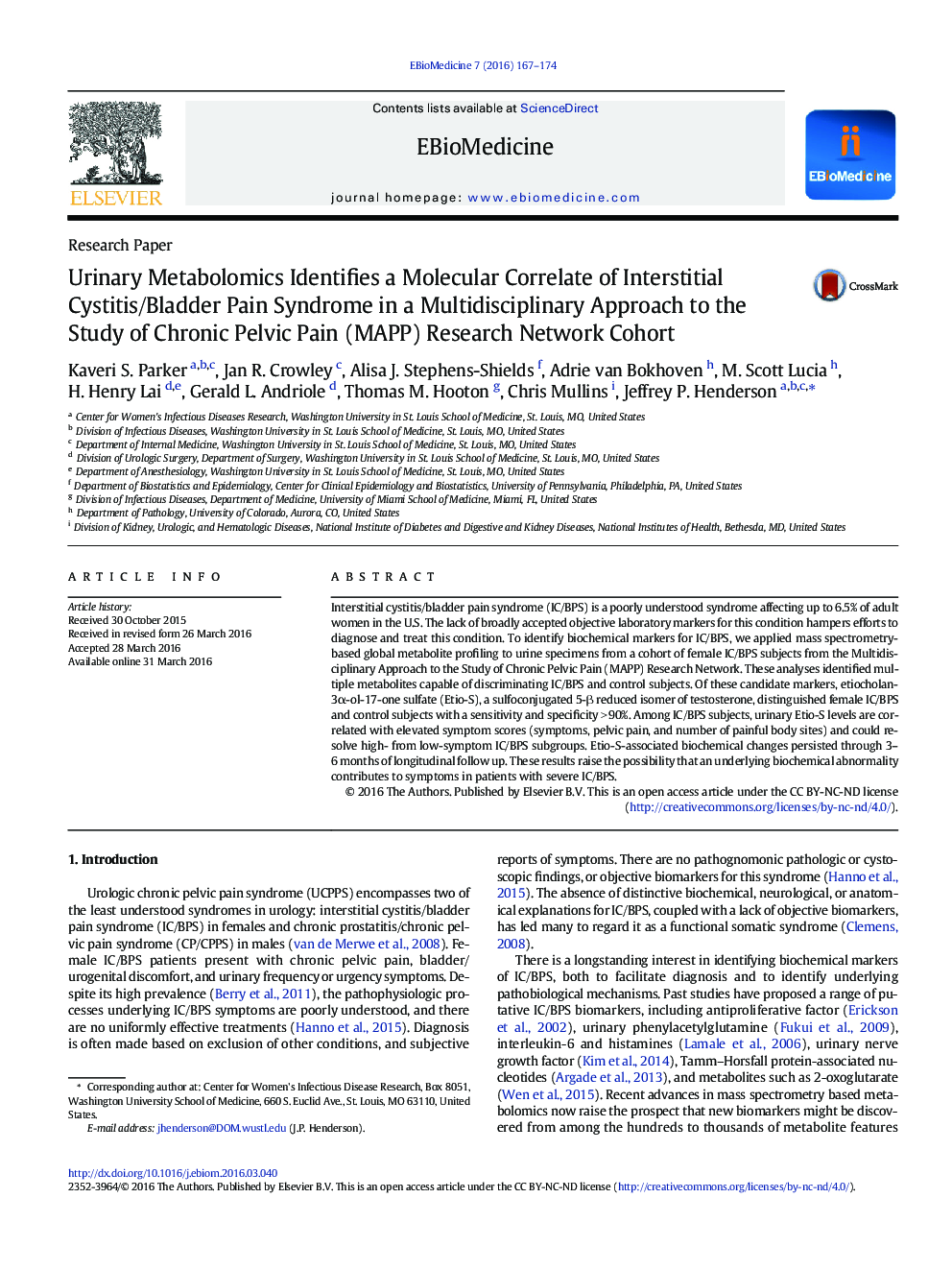| کد مقاله | کد نشریه | سال انتشار | مقاله انگلیسی | نسخه تمام متن |
|---|---|---|---|---|
| 2120840 | 1546892 | 2016 | 8 صفحه PDF | دانلود رایگان |

• Unbiased small molecule profiling identified an interstitial cystitis/bladder pain syndrome associated metabolite.
• This urinary metabolite independently identified patients with severe symptoms scores.
• Associated biochemical changes persisted over 3–6 months and hint at broader metabolic dysfunction in patients.Interstitial cystitis/bladder pain syndrome (IC/BPS) is a poorly understood syndrome associated with chronic bladder or pelvic pain, often accompanied by frequent urination. Identifying biochemical pathways associated with IC/BPS is necessary to understand the disease processes and suggest new therapeutic targets. Here we applied a biochemical approach to compare all detectable urinary metabolites from human subjects with and without IC/BPS. This analysis identified a steroid hormone metabolite that corresponds to patients that report the most severe symptoms. This result offers insight into IC/BPS pathophysiology, and provides a new biochemical clue to guide future investigation into this mysterious condition.
Interstitial cystitis/bladder pain syndrome (IC/BPS) is a poorly understood syndrome affecting up to 6.5% of adult women in the U.S. The lack of broadly accepted objective laboratory markers for this condition hampers efforts to diagnose and treat this condition. To identify biochemical markers for IC/BPS, we applied mass spectrometry-based global metabolite profiling to urine specimens from a cohort of female IC/BPS subjects from the Multidisciplinary Approach to the Study of Chronic Pelvic Pain (MAPP) Research Network. These analyses identified multiple metabolites capable of discriminating IC/BPS and control subjects. Of these candidate markers, etiocholan-3α-ol-17-one sulfate (Etio-S), a sulfoconjugated 5-β reduced isomer of testosterone, distinguished female IC/BPS and control subjects with a sensitivity and specificity > 90%. Among IC/BPS subjects, urinary Etio-S levels are correlated with elevated symptom scores (symptoms, pelvic pain, and number of painful body sites) and could resolve high- from low-symptom IC/BPS subgroups. Etio-S-associated biochemical changes persisted through 3–6 months of longitudinal follow up. These results raise the possibility that an underlying biochemical abnormality contributes to symptoms in patients with severe IC/BPS.
Journal: EBioMedicine - Volume 7, May 2016, Pages 167–174